Which Zoysia???
tjeep_1999
11 years ago
Featured Answer
Sort by:Oldest
Comments (40)
ZoysiaSod
11 years agolast modified: 9 years agotjeep_1999
11 years agolast modified: 9 years agoRelated Discussions
Empire Zoysia Grass
Comments (17)Our company is the developer and patent holder of Empire Zoysia. We do not recommend a 1-0-1 fertilizer, but rather a fertilizer with a 1-0-1 ratio. An ideal fertilizer would be a 15-0-15 in the spring, or a 20-0-15 if your lawn appears to be lacking in nutrients. One way to get the green without the N is to use iron that can be found in products such as Ironite. Be sure to apply an insecticide such as Bayer Advanced Grub control annually in the spring to prevent billbugs and other insects. Empire is typically pretty resistant to fungus and disease, but occasionally in wet conditions problems can arise. If you see sudden browning in spots, it usually a fungus issue and a systemic fungicide should be applied and will cure the issue. The link I included is to the maintenance page for Empire on our site. If you have any other questions let us know. If you would like more info on fertility, be sure to check out the post on understanding fertilizer on our Turf Talk blog. Good Luck! Drew Wagner Sod Solutions Inc. Here is a link that might be useful: Empire Zoysia Maintenance Schedule...See Moreburning off zoysia grass
Comments (11)Isn't burning actually Killing it? No not at all, burning dormant Bermuda and Zoysia can do quite a bit of good, mostly fertilize it. Zoysia and Bemuda reproduce by rhizomes (underground) and stolons (above ground) runners. Grass fires are no where near hot enough to burn it. All it does is clear out the dead dormant grass, let the sun shine in, and the ashes renew the soil with rich nutrients. Look along any highway in the south where there has been a grass fire about a week or two after. It will be bright green and lush assuming some rain and warm weather... But to the question at hand of burning Zoysia to get rid of heavy thatch buildup it will not work because the fire is not hot enough to burn the thatch off. I twill just pass right over it as it acts like a fire wet blanket on top of the ground. Now you could lift and loosen it up and would burn if left to dry out. But at that point you just as well rake it up and avoid the risk of burning....See MoreSt. Augustine or Zoysia for a shady yard?
Comments (24)Oh my goodness, Texas-Weed, it's a full-time job correcting all your mistakes. Cutting zoysia once a week is NOT infrequent mowing that will lead to excessive thatch. My zoysia has never been cut more often than once a week, and it's never had a thatch problem. But don't rely on my anecdote. Let's look at what Alabama A&M and Auburn have to say about cutting frequency and height. But first before we go to Auburn and Alabama, let's remember from the previous posts in this thread that 2 University of Arkansas professors and 3 University of Florida professors allow for a maximum zoysia cutting height of 2.5 inches, which is significantly higher than your maximum of 1.5 inches, Texas-Weed. Now onto Auburn University's and the University of Alabama A&M's advice for mowing heights and mowing frequencies of various Zoysia grasses. The first thing shown on each line below is the name of the Zoysia species or of the specific cultivar/variety within the species. The second thing shown is the Minimum Mowing Height in inches for that grass. The third thing shown is the Optimum Mowing Height in inches. The fourth thing is the Maximum Mowing Height in inches. The fifth and last thing shown is the Mowing Frequency in days (it's shown in parentheses). Zoysia japonica, 2 , 2 , 3 , (every 7-10 days) Meyer Zoysia, 1 , 1.5 , 2 , (every 10-14 days) Belair Zoysia, 1 , 1.5 , 2 , (every 7-10 days) El Toro Zoysia, 1 , 1.5 , 2 , (every 7-10 days) The above are all cultivars within the Zoysia japonica species (Palisades is also within this japonica species). This species tends to have wider blades and lower shoot density than the other two main zoysia species, which are Zoysia matrella and Zoysia tenuifolia. The tenuifolia species is not common in the U.S. A little bit of it is used as ground cover in parts of Southern California. Alabama A&M and Auburn also list mowing heights and frequencies for some cultivars in the Zoysia matrella species. These thinner bladed grasses have a maximum mowing height of 1 inch, tend to have denser shoot density than the cultivars within japonica, and tend not to have the cold hardiness of the japonica's, so they're not found around here in the northern half of the Transition Zone. Yes, that document is "Under Review," (because universities like to catch mistakes, Texas-Weed), but I saw similar mowing frequency numbers for zoysia printed on the web somewhere else a couple months ago--I don't recall where right now. By the way, I read in a couple textbooks I got from Amazon that a little thatch is helpful to grass. It is *excessive* thatch that is not....See More'Jamur' Zoysia - In Atlanta GA
Comments (21)Blakeas wrote on February 25: > so just go to home depot and look for slow release granules in UREA 15-5-10 or 20-5-10? I looked at some other sites and it said to do it now - btwn feb and march.... You should wait to apply fertilizer to zoysia until 2 weeks after the zoysia greens up. Then you can apply fertilizer if you want to. But the best time to apply fertilizer is when the grass is actively growing the fastest, which for zoysia, is summer. So near summer, around May or June, is a great time to fertilize. But I have 80 pounds of alfalfa and corn gluten meal (CGM) I have to get rid of, so I will first fertilize 2 weeks after the zoysia greens up. I would have liked to have applied the CGM by now as a pre-emergent (lots of little henbits sprouting now in addition to last Fall's mature henbit plants now blooming purple--henbit is a cool-season weed), but I won't apply the CGM now because the zoysia hasn't yet greened up. If my lawn were mostly cool season grasses, I probably would have applied the CGM as a pre-emergent. As it is, I'll use the CGM on my zoysia as a fertilizer at the right time. From the University of Florida at http://edis.ifas.ufl.edu/lh011 : Since zoysiagrass is very slow to green-up in the spring, avoid applying fertilizer until after the turf has become fully green to avoid premature green-up, which is prone to frost injury. This is especially important in North Florida, where late spring frosts may damage the grass. Delaying spring fertilization until the turf is actively growing and can use the fertilizer also reduces the potential for nitrogen leaching from fertilizer. Likewise, don't fertilize too late in the year, as this can slow regrowth the following spring. An application of iron can enhance spring green-up. Applying nitrogen on zoysiagrass in early spring and late fall significantly increases the risk of large (brown) patch disease....See Moreauteck
11 years agolast modified: 9 years agoZoysiaSod
11 years agolast modified: 9 years agotjeep_1999
11 years agolast modified: 9 years agotnjdm
11 years agolast modified: 9 years agoZoysiaSod
11 years agolast modified: 9 years agoZoysiaSod
11 years agolast modified: 9 years agoZoysiaSod
11 years agolast modified: 9 years agoZoysiaSod
11 years agolast modified: 9 years agoZoysiaSod
11 years agolast modified: 9 years agoZoysiaSod
11 years agolast modified: 9 years agoshailu
11 years agolast modified: 9 years agoZoysiaSod
11 years agolast modified: 9 years agoZoysiaSod
11 years agolast modified: 9 years agoZoysiaSod
11 years agolast modified: 9 years agotexas_weed
11 years agolast modified: 9 years agoncredclaygardener
11 years agolast modified: 9 years agoauteck
11 years agolast modified: 9 years agotexas_weed
11 years agolast modified: 9 years agoncredclaygardener
11 years agolast modified: 9 years agoauteck
11 years agolast modified: 9 years agotexas_weed
11 years agolast modified: 9 years agoncredclaygardener
11 years agolast modified: 9 years agotexas_weed
11 years agolast modified: 9 years agoncredclaygardener
11 years agolast modified: 9 years agotexas_weed
11 years agolast modified: 9 years agoncredclaygardener
11 years agolast modified: 9 years agoSandhills_NC
9 years agolast modified: 9 years agoZoysiaSod
9 years agolast modified: 9 years agoncredclaygardener
9 years agolast modified: 9 years agoncredclaygardener
9 years agolast modified: 9 years agooneobi1
7 years agoRobert Bailey
7 years agonorthTXgirl
7 years agoreeljake
7 years agoSean Hopwood
4 years agoSean Hopwood
4 years agoTreesOnTheBeach
4 years ago
Related Stories

LANDSCAPE DESIGNCalifornia Says Goodbye to the Sprawling Ornamental Lawn
New state rules will effectively limit turfgrass to 25 percent of the landscape in most new and renovated yards
Full Story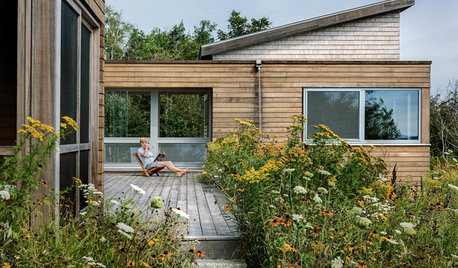
GARDENING GUIDES3 Ways to Revel in Summer Garden Sweetness
Patiently observe what works and doesn’t work in your landscape
Full Story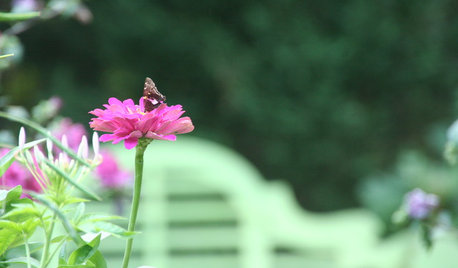
GARDENING GUIDESSoutheast Gardener's August Checklist
Brave the August heat and humidity in your summer garden, and you'll reap rewards this fall
Full Story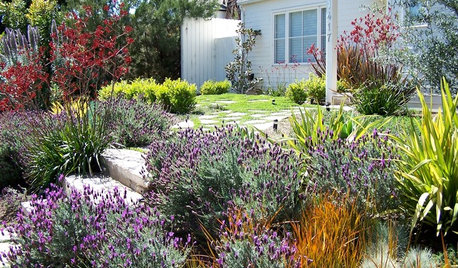
SAVING WATERGreat Plants for Lush, Low-Water Gardens
Water restrictions making your garden look washed out? Give it living color with unthirsty grasses, flowers and succulents
Full Story
GARDENING GUIDES5 Great Grasses for a New Lawn
Learn about maintenance, wear tolerance, ideal climate and more for these top turf choices to pick the right one for you
Full Story
LANDSCAPE DESIGN7 Low-Maintenance Lawn Alternatives
Turf isn't the only ground cover in town. Get a lush no-grass lawn with clover, moss and other easy-care plants
Full Story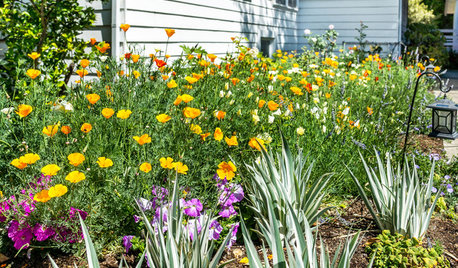
LANDSCAPE DESIGN10 Ideas for a Creative, Water-Conscious Yard
Check out these tips for a great-looking outdoor area that needs less water
Full Story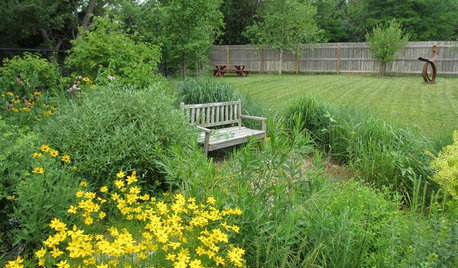
GARDENING GUIDESHow to Design a Garden That Lasts
Climates are changing. Wildlife is evolving. Can your garden keep up?
Full Story
GARDENING GUIDESHow to Plant a New Lawn From Sod
Take the quick-start route to turf with sod; these installation guidelines will help ensure a healthy and long-lasting lawn
Full Story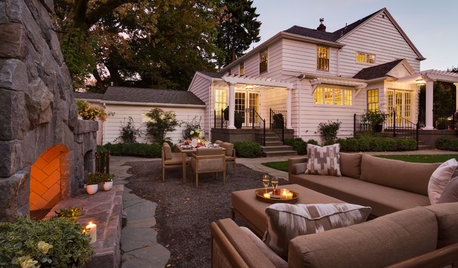
GARDENING AND LANDSCAPINGHouzz Survey: See What Homeowners Are Doing With Their Landscapes Now
Homeowners are busy putting in low-maintenance landscapes designed for outdoor living, according to the 2015 Houzz landscaping survey
Full Story


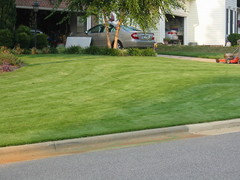
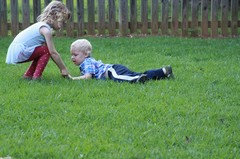
shailu